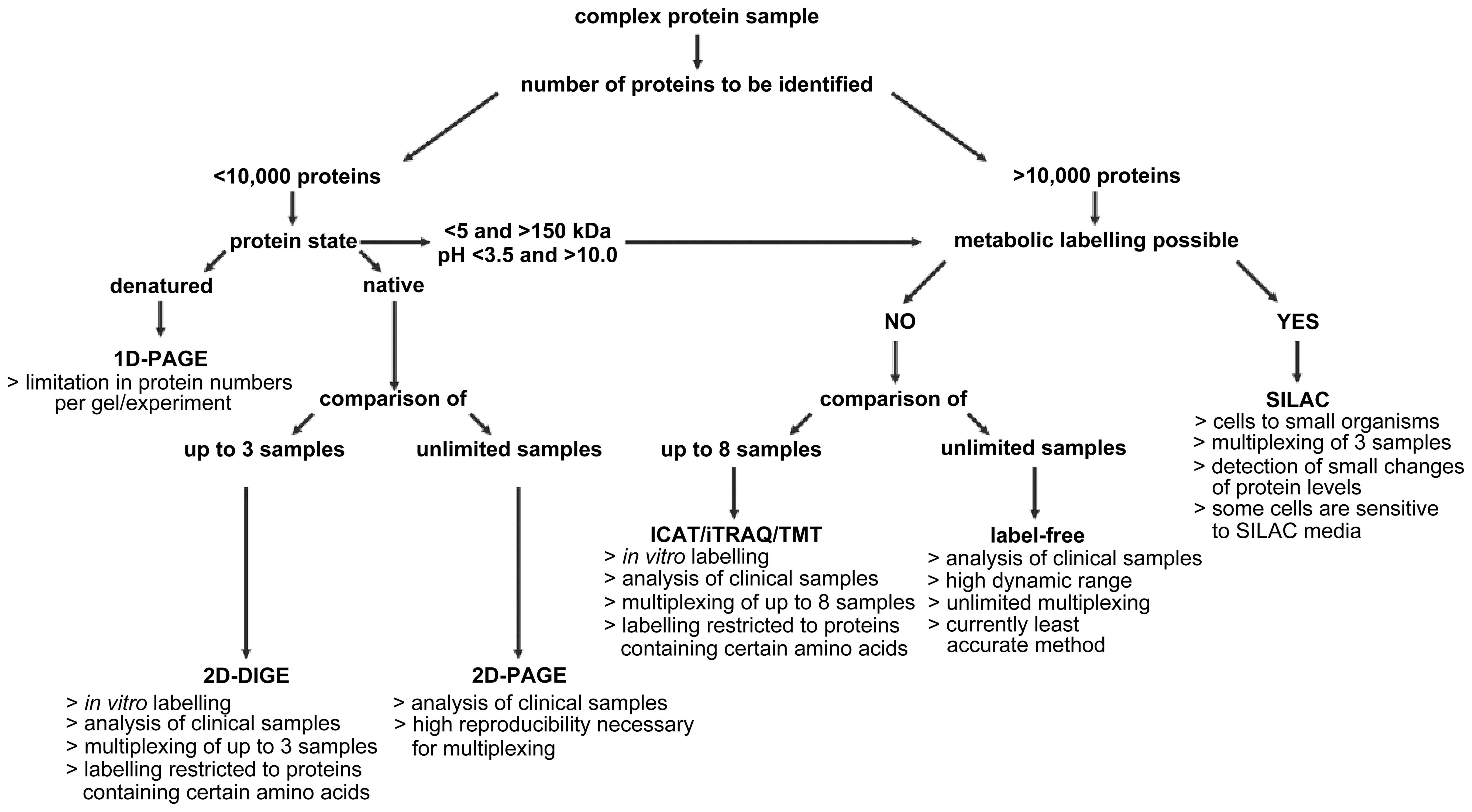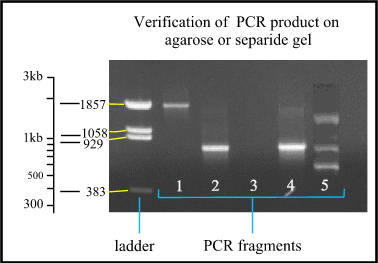38 labelling gel electrophoresis
Gel Electrophoresis - University of Utah Gel Electrophoresis. Have you ever wondered how scientists work with tiny molecules that they can't see? Here's your chance to try it yourself! Sort and measure DNA strands by running your own gel electrophoresis experiment. Click to unmute. See how gel electrophoresis is used in forensics. Can DNA Demand a Verdict? PDF Gel Electrophoresis: How Does It Work - Purdue University Simply put, gel electrophoresis uses positive and negative charges to separate charged particles. Particles can be positively charged, negatively charged, or neutral. ... draw a picture of the gel and the wells. Label which dyes you will put in each well. b. When you load a gel, it is very important that you do not damage the gel in any way. You
Agarose Gel Electrophoresis: Principle, Procedure, Results Agarose gel electrophoresis is a powerful separation method frequently used to analyze DNA fragments generated by restriction enzymes, and it is a convenient analytical method for separating DNA fragments of varying sizes ranging from 100 bp to 25 kb. DNA fragments smaller than 100 bp are more effectively separated using polyacrylamide gel ...

Labelling gel electrophoresis
Differential in Gel Electrophoresis - an overview - ScienceDirect After electrophoresis, the gel is scanned sequentially with the excitation wavelengths of the three dyes, and protein abundances are obtained. A given protein from different samples, regardless of the labeling dye used reaches the same position on the gel; thus problems of inter-gel variations do not interfere. PDF Electrophoresis Gel - Weill Cornell Medicine Electrophoresis Gels and Solutions Updated Sept-20 T:\Documentation\EHS-Update\Electrophoresis_Gel.docx Overview Electrophoresis gels are commonly used in molecular biology laboratories at Weill Cornell Medicine (WCM) for the identification of DNA. These gels will typically be agarose-based or polyacrylamide-based. The DNA identification process Gel Electrophoresis - Everything You Need To Know | The Lab Label The basic principle of agarose gel electrophoresis relies on charged particles moving through an agarose gel. The electricity pulls the negatively charged DNA or RNA towards the positive electrode. Before the fragments reach the positive electrode, they have to overcome an obstacle course that is presented by the agarose gel matrix.
Labelling gel electrophoresis. Biotechnology 101 Guide: Introduction to Gel Electrophoresis This last introduction chapter will introduce you to Gel Electrophoresis, a method to separate samples of DNA fragments by their size. The gel (1) is a jelly-like substance made from agarose, a sugar polymer extracted from seaweed. The gel is immersed in a buffer solution and has electrodes (2 / 3) on either side, creating an electrical field. Evaluation of saturation labelling two-dimensional difference gel ... Evaluation of saturation labelling two-dimensional difference gel electrophoresis fluorescent dyes Abstract Two-dimensional difference gel electrophoresis (2-D DIGE) enables an increased confidence in detection of protein differences. How to Interpret DNA Gel Electrophoresis Results | GoldBio During gel electrophoresis, you may have to load uncut plasmid DNA, digested DNA fragment, PCR product, and probably genomic DNA that you use as a PCR template into the wells. Your digested DNA fragment is a digested PCR product. The next step is to identify those bands to figure out which one to cut. Gel Electrophoresis. Lane 1: DNA Ladder. Fluorophore-Labeled Primers Improve the Sensitivity, Versatility, and ... Denaturing gradient gel electrophoresis (DGGE) is widely used in microbial ecology. We tested the effect of fluorophore-labeled primers on DGGE band migration, sensitivity, and normalization. The fluorophores Cy5 and Cy3 did not visibly alter DGGE fingerprints; however, 6-carboxyfluorescein retarded band migration.
Gel Electrophoresis - Definition, Purpose and Steps | Biology Dictionary The broad steps involved in a common DNA gel electrophoresis protocol: 1. Preparing the samples for running The DNA is isolated and preprocessed (e.g. PCR, enzymatic digestion) and made up in solution with some basic blue dye to help visualize the movement of the sample through the gel. 2. An agarose TAE gel solution is prepared Gel Electrophoresis Overview | Science Primer Gel Electrophoresis Overview. Electrophoresis is the movement of charged particles through an electrical field. Since the sugar-phosphate backbone of DNA * has a negative charge, electrophoresis can be used to pull DNA through an electrical field towards the positive electrode of a circuit. Molecular biologists have exploited this behavior to ... Addgene: Protocol - How to Run an Agarose Gel Run the gel at 80-150 V until the dye line is approximately 75-80% of the way down the gel. A typical run time is about 1-1.5 hours, depending on the gel concentration and voltage. Note: Black is negative, red is positive. The DNA is negatively charged and will run towards the positive electrode. Always Run to Red. Agarose Gel Electrophoresis for the Separation of DNA Fragments Agarose gel electrophoresis is the most effective way of separating DNA fragments of varying sizes ranging from 100 bp to 25 kb 1.Agarose is isolated from the seaweed genera Gelidium and Gracilaria, and consists of repeated agarobiose (L- and D-galactose) subunits 2.During gelation, agarose polymers associate non-covalently and form a network of bundles whose pore sizes determine a gel's ...
A Complete Guide for Analysing and Interpreting Gel Electrophoresis Results Agarose gel electrophoresis is an important technique in molecular genetics for a long. DNA bands can only be visualized using agarose gel electrophoresis. In genomic research, analyzing and interpreting the agarose gel electrophoresis results are very crucial. 3 Ways to Read Gel Electrophoresis Bands - wikiHow With your gel sheet in front of you, find the switch on a tube of UV light to turn it on. Hold the UV light 8-16 inches (20-41 cm) away from the gel sheet. Illuminate the DNA samples with the UV light to activate the dye and read the results. If the test was performed properly, your sheet should have 2-8 sets of vertical stripes in parallel rows. High Sensitivity Protein Gel Electrophoresis Label Compatible with Mass ... Sodium dodecyl sulfate polyacrylamide gel electrophoresis (SDS-PAGE) is a widely utilized technique for macromolecule and protein analysis. While multiple methods exist to visualize the separated protein bands on gels, one of most popular methods of staining the proteins is with Coomassie dye. A mor … PDF Lab 4: Gel Electrophoresis - Vanderbilt University Gel electrophoresis Gel electrophoresisis a method of separating DNA fragments by movement through a Jello-like substance called agarose. Derived from a seaweed polysaccharide, agarose gels form small pores that act as sieves to separate DNA based on size; whereby smaller DNA molecules move through the pores faster and easier than larger molecules.
Part 2: Analyzing and Interpreting (Agarose) Gel Electrophoresis Results The agarose gel electrophoresis is a molecular genetic technique used to separate DNAon the basis of size and charge of it. The negatively charged DNA migrates towards the positive node under the influence of the current. The results of agarose electrophoresis are affected by some of the factors enlisted below, The concentration of gel
Gel electrophoresis (article) | Khan Academy Gel electrophoresis is a technique used to separate DNA fragments according to their size. DNA samples are loaded into wells (indentations) at one end of a gel, and an electric current is applied to pull them through the gel. DNA fragments are negatively charged, so they move towards the positive electrode.
Agarose gel electrophoresis of labeled DNA in which the same gel is ... Agarose gel electrophoresis of labeled DNA in which the same gel is displayed before staining (Unstained) and after ethidium bromide staining (EtBr Stained). Lanes C contain unlabeled pCI Luc...
Annotating A Gel | Get Your Science On Wiki | Fandom 1.In Inkscape import your gel file and adjust the size of your picture to fit the page out line (increase zoom if needed). 2. Add in the significant ladder measurements. (On Mark's Lab area wall or just ask Mark!) 3. Create color coded rectangles to give a background for the following text. 4. Label what you PCR'd and gelled (kind of like a title).
Gel Electrophoresis - an overview | ScienceDirect Topics Gel electrophoresis is an analytical technique that allows size separation of DNA as well as other macromolecules. For gel electrophoresis, a DNA sample is loaded at one end of a gel matrix (usually agarose or acrylamide) that provides a uniform pore size through which the DNA molecules can move.
Gel electrophoresis - dnai.org Label: Gel electrophoresis. Description: In the early days of DNA manipulation, DNA fragments were laboriously separated by gravity. In the 1970s, the powerful tool of DNA gel electrophoresis was developed. This process uses electricity to separate DNA fragments by size as they migrate through a gel matrix.
PDF Electrophoresis Gel and Liquid Disposal - ehs.osu.edu This electrophoresis process utilizes an organic fluorescence dye or an inorganic stain to stain the nucleic acids or proteins in a gel. These gels are typically agarose-based or polyacrylamide-based. There are a number of different protocols and dyes used in the preparation and use of electrophoresis gels. Gels can be cast with or without dyes.
DIG RNA Labeling Mix Protocol Troubleshooting - Sigma-Aldrich After the DIG labeling reaction, check results by gel electrophoresis to make sure the transcript has the expected size. There are some DNA sequences, which may cause the RNA polymerases to produce abortive or shortened transcripts.
ImageJ for Editing & Labelling PCR Gel Image - YouTube This Tutorial is all about how to quickly Edit & Label PCR Gel Image Using ImageJ software. Presented by - Elvis SamuelJoin Our Telegram Channel for free Sof...





Post a Comment for "38 labelling gel electrophoresis"